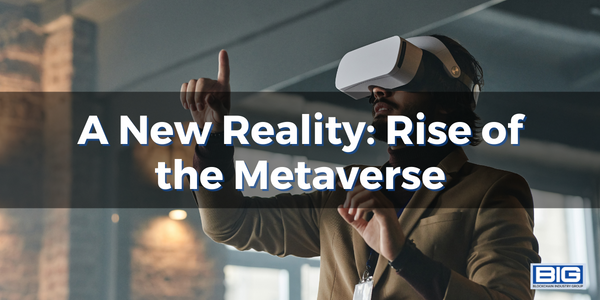
Virtual reality (VR) has been a staple of science fiction for decades, with the concept of a metaverse – a shared virtual space – appearing in works such as Neal Stephenson’s “Snow Crash” and the “Matrix” film franchise. But it wasn’t until recently that the technology has advanced enough to make the metaverse a realistic possibility. The concept of a metaverse has come a long way since its inception, and it is now closer than ever to becoming a reality.
History of Virtual Reality
Virtual reality has been a topic of interest for scientists and engineers since the mid-20th century. However, it wasn’t until the late 1980s and early 1990s that VR technology started to become more sophisticated and accessible to the general public. During this time, VR devices such as head-mounted displays (HMDs) were developed, and early VR applications such as gaming and simulation were introduced.
Despite early advancements, VR technology still had several limitations, including low resolution displays and limited processing power. As a result, VR failed to gain widespread adoption and was largely relegated to niche applications.
Evolution of the Metaverse Concept
With the advent of the Internet and the growth of online communities, the concept of a metaverse evolved to include not just VR, but also other forms of immersive digital experiences. The metaverse became a shared virtual space where people could interact with each other and digital objects in a seemingly real way.
In the early 2000s, the rise of massively multiplayer online games (MMOGs) marked a significant milestone in the development of the metaverse. MMOGs allowed players to enter virtual worlds and interact with each other in real-time, creating a sense of community and shared experience.
The concept of the metaverse has continued to evolve in recent years, driven by advancements in technology such as increased processing power, improved graphics, and the widespread availability of high-speed Internet connections. The development of VR and augmented reality (AR) devices has also played a major role in bringing the metaverse closer to reality.
Current State of the Metaverse
Today, the metaverse is no longer just a concept, but a rapidly growing reality. A number of companies, including Facebook and Roblox, are investing heavily in VR and AR technologies and building metaverse platforms. These platforms aim to create a new reality where people can interact with each other and digital objects in a seemingly real way, regardless of their physical location.
One example of a metaverse platform is the virtual world Second Life, which has been around since 2003. Second Life allows users to create their own digital avatars, build virtual homes and businesses, and interact with other users. Today, Second Life has millions of registered users and a thriving virtual economy, with users buying and selling virtual goods and services.
Another example is Roblox, a platform that allows users to create and play games with friends in a virtual environment. Roblox has become incredibly popular, particularly among younger users, and is now valued at over $30 billion.
The Metaverse and Real Estate: A New Era of Digital Property
—
The Metaverse: A New Frontier for Real Estate Investors
—
The Metaverse: Exploring the Future of the Virtual World
The metaverse is also being used for more practical applications, such as remote work and education. With the COVID-19 pandemic forcing many people to work from home, virtual meeting platforms such as Zoom have become increasingly popular. These platforms allow people to connect and collaborate in a virtual environment, even if they are physically far apart.
In conclusion, the metaverse is rapidly becoming a reality, driven by advancements in technology and increased investment from companies. While there are still challenges to overcome, such as privacy and security concerns, the potential benefits of the metaverse are enormous. Whether it’s for gaming, socializing, work or education, the metaverse has the potential to revolutionize the way we live and interact with each other. By providing a shared virtual space where people can connect and collaborate, the metaverse has the potential to break down barriers of distance and create a more connected, global community.



